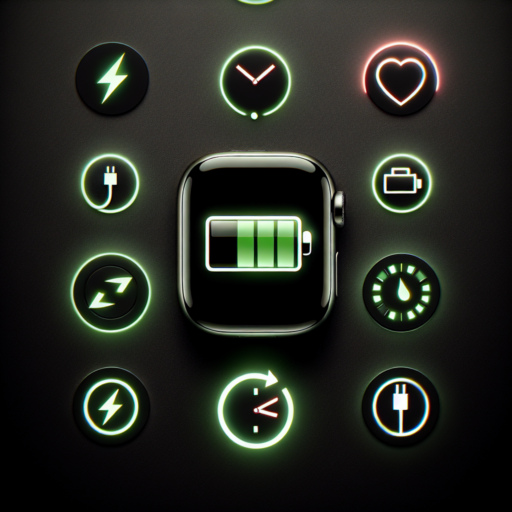How do you charge a fit tracker?
Charging a fit tracker is a straightforward process, but it’s crucial to follow the correct methods to ensure your device remains in top working condition. Typically, fit trackers come with a dedicated charging cable that must be used for optimal charging performance. Failing to use the designated charger can result in slower charging times or potentially damage your device.
Step-by-Step Guide to Charging Your Fit Tracker
- Start by locating the charging port on your fit tracker. This can usually be found on the back of the device or at the end of a removable wristband.
- Take the charging cable that came with your fit tracker and connect it to the charging port. Make sure the connection is secure.
- Plug the other end of the charging cable into a USB port on a computer, a USB wall charger, or a power bank. It’s recommended to use a power source that complies with your tracker’s charging specifications for safe and efficient charging.
- Once connected, your fit tracker should display a charging icon or a battery indicator to show that it’s successfully charging. If it doesn’t, try reconnecting the cable or checking it for any damage.
It’s important to note that while charging your fit tracker, it should be kept in a cool, dry place away from direct sunlight. Excessive heat can affect the battery’s lifespan and charging capacity. Moreover, ensure to keep the charging port and the cable clean and free from debris to maintain a good connection. Regular maintenance and proper charging will help extend the life of your fit tracker and keep it tracking your fitness activities accurately.
Are all Fitbit chargers compatible?
When it comes to keeping your Fitbit device charged and ready to track your fitness journey, understanding the compatibility of chargers is crucial. The question of whether all Fitbit chargers are compatible across their various models is one that surfaces frequently among users. Fundamentally, Fitbit devices come in various shapes and sizes, which directly impacts charger compatibility.
Not all Fitbit chargers are designed to be universally compatible with every Fitbit model. Each series or model of Fitbit often necessitates a specific type of charger, primarily due to the differing charging port designs and charging mechanisms. This means that a charger for a Fitbit Charge 4, for example, is not designed to fit or work with a Fitbit Versa. The specificity ensures that the charging dock or cable provides the correct electrical output and connection fit, optimizing the charging process and safeguarding the device’s battery longevity.
In essence, the compatibility of Fitbit chargers is a consideration that impacts the convenience of using these devices. Users with multiple Fitbit devices from different series might find themselves needing separate chargers for each, affecting the ease of charging and maintaining these devices. Recognizing the correct charger for your Fitbit model is key to ensuring its operational efficacy and long-term health.
No se han encontrado productos.
How do you charge a heart strong fitness tracker?
Charging your Heart Strong fitness tracker is a straightforward process, ensuring your device is always ready to track your fitness journey. Initially, it’s crucial to identify the type of charger your Heart Strong model requires, as this can vary. Most models come with a custom charging cable that uniquely fits their charging port.
Step-by-Step Charging Process
First step: Locate the charging cable that came with your Heart Strong fitness tracker. If you’ve misplaced it, you may need to order a replacement from the manufacturer as generic chargers might not be compatible.
Second step: Connect the charger to your fitness tracker. For most Heart Strong models, you’ll find the charging contacts on the back of the device. Gently align the charger pins with these contacts to ensure a proper connection.
Third step: Plug the other end of the charger into a USB power source. It’s recommended to use a computer or a certified wall charger for optimal charging efficiency. Your Heart Strong fitness tracker will typically display a charging symbol or light to indicate that it’s successfully charging.
Does a fitness tracker have a battery?
When it comes to monitoring your daily activities and health metrics, fitness trackers have become an indispensable tool for many. One common question that arises is: Does a fitness tracker have a battery? The simple answer is yes, fitness trackers are equipped with batteries, but the type, lifespan, and charging methods can vary significantly across different models and brands.
Battery Types in Fitness Trackers
Fitness trackers predominantly use rechargeable lithium-ion batteries. These are favored for their longevity and ability to hold a charge more efficiently than other types. Some models, however, might utilize coin cell batteries, especially those devices that are more simplistic in design and function, offering extended life that can span several months or even a year without the need for charging.
Understanding Battery Lifespan
The lifespan of a fitness tracker’s battery can greatly influence a user’s experience. While some trackers boast a battery life of up to a week or more on a single charge, others may require more frequent charging, depending on their features, such as GPS and heart rate monitoring, which can drain battery life more rapidly. Thus, when considering a fitness tracker, it’s crucial to balance between functionality and battery endurance to suit your lifestyle needs.



